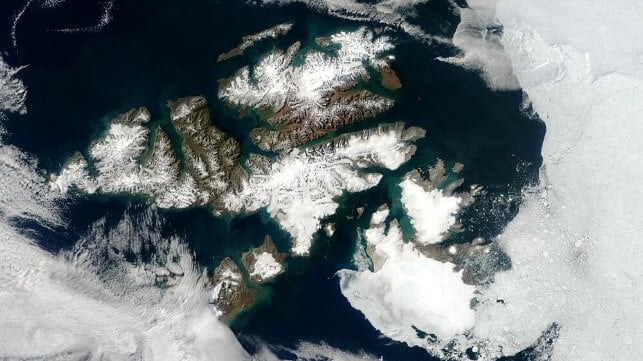Svalbard’s Glaciers Have Lost an Area the Size of Manhattan Into the Sea
[By Tian Li, Jonathan Bamber and Konrad Heidler]
The Arctic has warmed nearly four times faster than the global average since 1979. Svalbard, an archipelago near the northeast coast of Greenland, is at the frontline of this climate change, warming up to seven times faster than the rest of the world.
More than half of Svalbard is covered by glaciers. If they were to completely melt tomorrow, the global sea level would rise by 1.7cm. Although this won’t happen overnight, glaciers in the Arctic are highly sensitive to even slight temperature increases.
To better understand glaciers in Svalbard and beyond, we used an AI model to analyze millions of satellite images from Svalbard over the past four decades. Our research is now published in Nature Communications, and shows these glaciers are shrinking faster than ever, in line with global warming.
Specifically, we looked at glaciers that drain directly into the ocean, what are known as “marine-terminating glaciers”. Most of Svalbard’s glaciers fit this category. They act as an ecological pump in the fjords they flow into by transferring nutrient-rich seawater to the ocean surface and can even change patterns of ocean circulation.
Where these glaciers m…
CONTINUE READING THE ARTICLE FROM The Maritime Executive HERE


Comments are closed, but trackbacks and pingbacks are open.